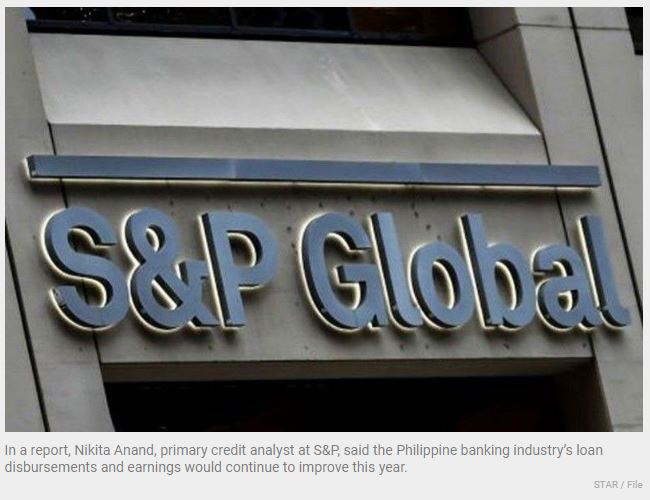S&P sees 5 to 7% credit growth for Philippine banks
MANILA, Philippines — S&P Global Ratings expects Philippine banks to enjoy a sustained credit growth of five to seven percent this year amid the return of corporate and individual borrowers as the country continues to recover from the impact of the pandemic.
In a report, Nikita Anand, primary credit analyst at S&P, said the Philippine banking industry’s loan disbursements and earnings would continue to improve this year.
“Sector-wide profits are likely to strengthen in 2022, with the sector’s return on average assets increasing to 1.2 percent. This is on the back of higher credit growth, growth in fee income as business activity picks up, and lower credit costs. We forecast credit growth of five to seven percent following better economic growth,” Anand said.
Loan disbursements by big banks in the Philippines picked up for four straight months from August to November last year after slumping for eight consecutive months between December 2020 and July 2021 due to uncertainties brought about by the pandemic.
Latest data from the Bangko Sentral ng Pilipinas (BSP) showed credit growth accelerated to four percent to P9.35 trillion in end-November last year from 3.5 percent in October as the economy continued to absorb the aggressive 200-basis-point rate cuts and the reduction of the reserve requirement ratio for banks in 2020.
“Any reduction in banks’ regulatory reserve requirement can push credit growth toward the higher end of our forecast,” Anand said.
The debt watcher said the credit losses of Philippine banks would continue to moderate, declining to 0.9 percent of gross loans this year from about one percent last year.
S&P is also convinced that the industry’s non-performing loan (NPL) ratio had peaked at 4.5 percent last year.
“By our estimates, the NPL ratio will decline from its peak of 4.5 percent. This is because most stressed loans have either been recognized or restructured. Some slippage is possible from the restructured pool, especially from the service sector,” Anand said.
Likewise, the implementation of Republic Act 11523 or the Financial Institutions Strategic Transfer (FIST) Act is also expected to help reduce the industry’s soured loans.
“Banks’ disposal of NPLs to asset-management companies could bring down the level of stressed loans visible in the system,” Anand said.
The debt watcher sees the country’s gross domestic product (GDP) growth accelerating to 7.4 percent this year from the projected five percent last year, reversing the record 9.6 percent contraction in 2020.
“Increased mobility and improved business and consumer sentiment will support a banking-sector recovery. Given that the vaccination rate in the Philippines is lagging peers, new and more infectious variants could potentially derail the budding recovery,” Anand said.
However, S&P warned that new aggressive COVID variants, including Omicron, remain a risk to recovery. It said the reimposition of mobility curbs would hurt businesses and consumers, resulting in further asset quality pain for the banking sector.
Source: https://www.philstar.com/business/2022/01/26/2156326/sp-sees-5-7-credit-growth-philippine-banks


 English
English




